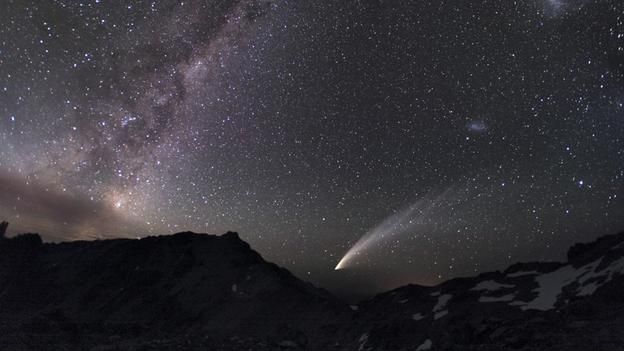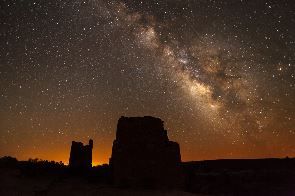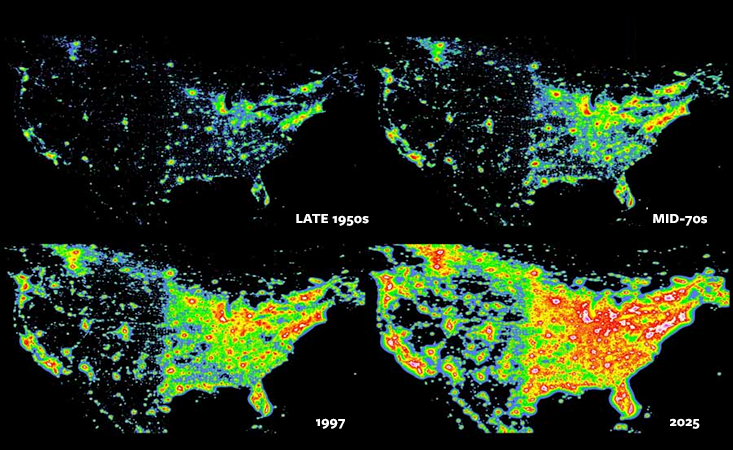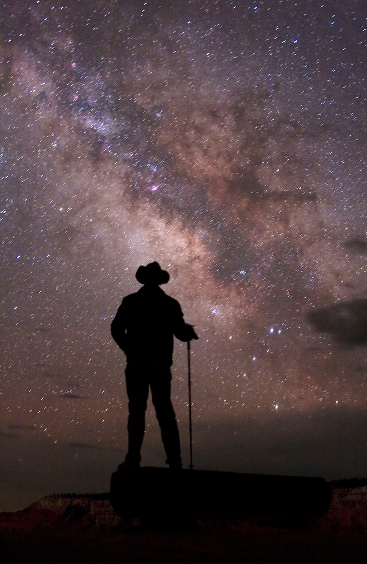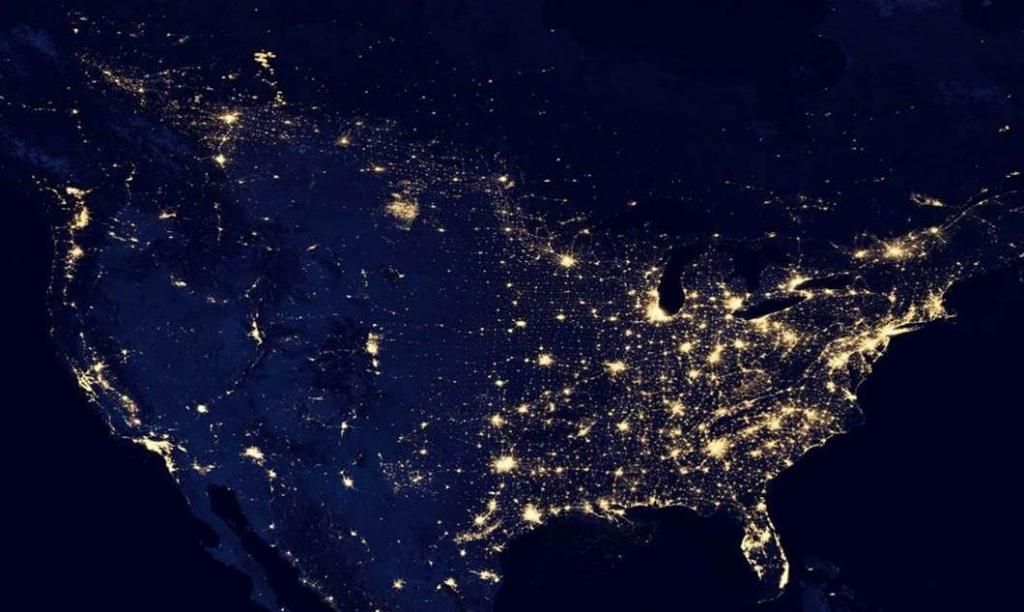Dark Skies Disappearing
Published on October 14th, 2014
Light pollution and population
After my first visit as a 10-year old kid to see dinosaur fossils at the Carnegie-Mellon Museum in Pittsburgh, Pennsylvania, I wanted to become a paleontologist. It was the first six-syllable word I ever learned.
By the time I reached age 11, however, after a school trip to the Buhl Planetarium, I’d lifted my gaze from the ground to the sky and set my sights higher: all the way to the stars. I decided I wanted to be an astronomer.
However, a two-week special unit in astronomy in my 6th grade science class quickly disabused me of this dream, once I saw how much math was involved. While I was decent at elementary school arithmetic, it was not a subject I gravitated towards. And I realized right then and there that what I loved about astronomy was not its rigorous, sometimes tedious methods of investigation and discovery, but rather the marvels those same methods and tools such as telescopes revealed about the amazing universe all around us.
|
|
|
The night sky is full of cosmic wonders and mystery – if we can only see it through worsening haze and the glare and glow of light pollution. |
Popular TV shows like Cosmos (in both its first version three decades ago with Carl Sagan and its recent incarnation with Neil deGrasse Tyson) remind us of the intimate relationship our ancient ancestors enjoyed with the night sky and the celestial objects sparkling high above in that all-embracing celestial dome.
|
|
|
Hovenweep National Monument along the Utah-Colorado border |
The sun is far and away the most important of these objects, of course, but others in our solar system – the moon especially, but also the closest and largest planets (i.e., Venus, Mars, Jupiter and Saturn), asteroids, meteors and comets all play compelling roles in multiple cultures, mythologies and religions.
And then – much, much further away – are the stars of the Milky Way Galaxy in which we reside. The ancients personalized our connection with even these far-flung specks spattered across the heavens by designating the constellations and inventing their background stories.
All this is part of our rich cultural heritage that stretches back millennia. But now, because of the human population boom of the past century and the even more phenomenal spread of artificial lighting associated with urbanization and industrialization, this heritage is at risk of being blotted out.
|
|
|
The spread of artificial light pollution across North America |
The International Dark-Sky Association (IDA) works to educate Americans and citizens of the world about the loss of dark skies with the spread of urbanization around the planet. IDA says that:
The wonder of the night sky has been a constant since the dawn of civilization. It has inspired countless generations, poets, scientists and dreamers. Today this natural resource is threatened by the careless use of artificial light.
IDA engages with government, volunteers and other organizations to increase awareness of the natural night sky and to build a movement to protect it. IDA focuses on one basic concept: lighting only what we need to and only when we need it.
They acknowledge that some artificial light at night is necessary for safety and recreation. They work with citizens, manufacturers, planners and legislators to furnish energy-efficient lighting options that direct light where it is needed down on the ground, not spilling it uselessly up into the sky. IDA helps communities draft lighting ordinances that save money while reducing light pollution.
Even on clear nights with good air quality, urban dwellers typically only get to see the planets and a few of the brightest stars like Sirius, Rigel, Arcturus, Vega and Betelgeuse. Many urbanites may go their entire lives without ever once glimpsing the majestic Milky Way, the sight of which is both humbling and awe-inspiring.
|
|
|
Astronomer Tyler Nordgren contemplates a dazzling night sky |
A recent article in the magazine Nautilus recounts how University of Redlands astronomer Tyler Nordgren and writer Todd Pitock camped one night in the Alabama Hills beneath the crown of the Sierra Nevada – 14,495 ft. Mt. Whitney – above Lone Pine and the Owens Valley. Despite this secluded setting, about as isolated as one can get in California, the hazy glow of Los Angeles, 200 miles to the south, and Las Vegas, 250 miles to the east, was still visible. Even this remote site no longer offered the pristine stargazing our ancestors once took for granted.
“We’re losing the stars,” Nordgren told Pitock.
Think about it this way: For 4.5 billion years, Earth has been a planet with a day and a night. Since the electric light bulb was invented, we’ve progressively lit up the night, and have gotten rid of it. Now 99 percent of the population lives under skies filled with light pollution.
Nordgren first noticed what we are losing in 1992 at Cal Tech’s Palomar Observatory north of San Diego. Though it was then the world’s largest telescope, astronomers were already fleeing the light pollution from nearby development. Since then the situation has continued to deteriorate from the ever-encroaching, cumulative urbanization of the San Diego metro area and towns like Escondido and Temecula.
Americans are now deprived of an unblemished view of the stars throughout virtually the entire region east of the Mississippi River, as well as along the populous West Coast, because they are simply too lit up. During the past two decades, at least two-thirds of Americans have not been able to see the Milky Way at all. And the situation is expected to get worse before it gets better.
 National parks offer some of the best stargazing left in America, and the National Park Service offers night sky interpretive programs to the public. NPS also fights to defend dark skies in the parks by encouraging proper lighting at proposed developments even miles away from them that might cumulatively compromise the quality of their night skies.
National parks offer some of the best stargazing left in America, and the National Park Service offers night sky interpretive programs to the public. NPS also fights to defend dark skies in the parks by encouraging proper lighting at proposed developments even miles away from them that might cumulatively compromise the quality of their night skies.
|
|
| Satellite image of light pollution encroaching across the USA – the brightest, biggest patches are closely correlated with high population density. |
If we Americans allow our population to swell to 400 million and 500 million in this century – as is now projected under expected immigration and fertility trends – one of the many intangible costs this runaway growth will impose is a further degradation in our ability to appreciate the universe we live in simply by lifting our gaze skyward.
That would represent an ineffable, incalculable loss and further sever our spiritual connection to nature. Images on the Internet could never compensate for the profound experience of actually standing beneath a sky that is at once dark and ablaze with stars – so numerous that the constellations themselves are hard to discern among the thousands of shining points of light.
To be able to see the broad band of the Milky Way stretching from horizon to horizon and to detect the fuzzy little patch of M31, the spiral galaxy in Andromeda, our sister galaxy, and at 2 million light-years away, the most distant object in the heavens visible to the naked eye, is simply unforgettable. But it is an experience that – unless we act – almost all Americans will be deprived from ever having in the first place.

